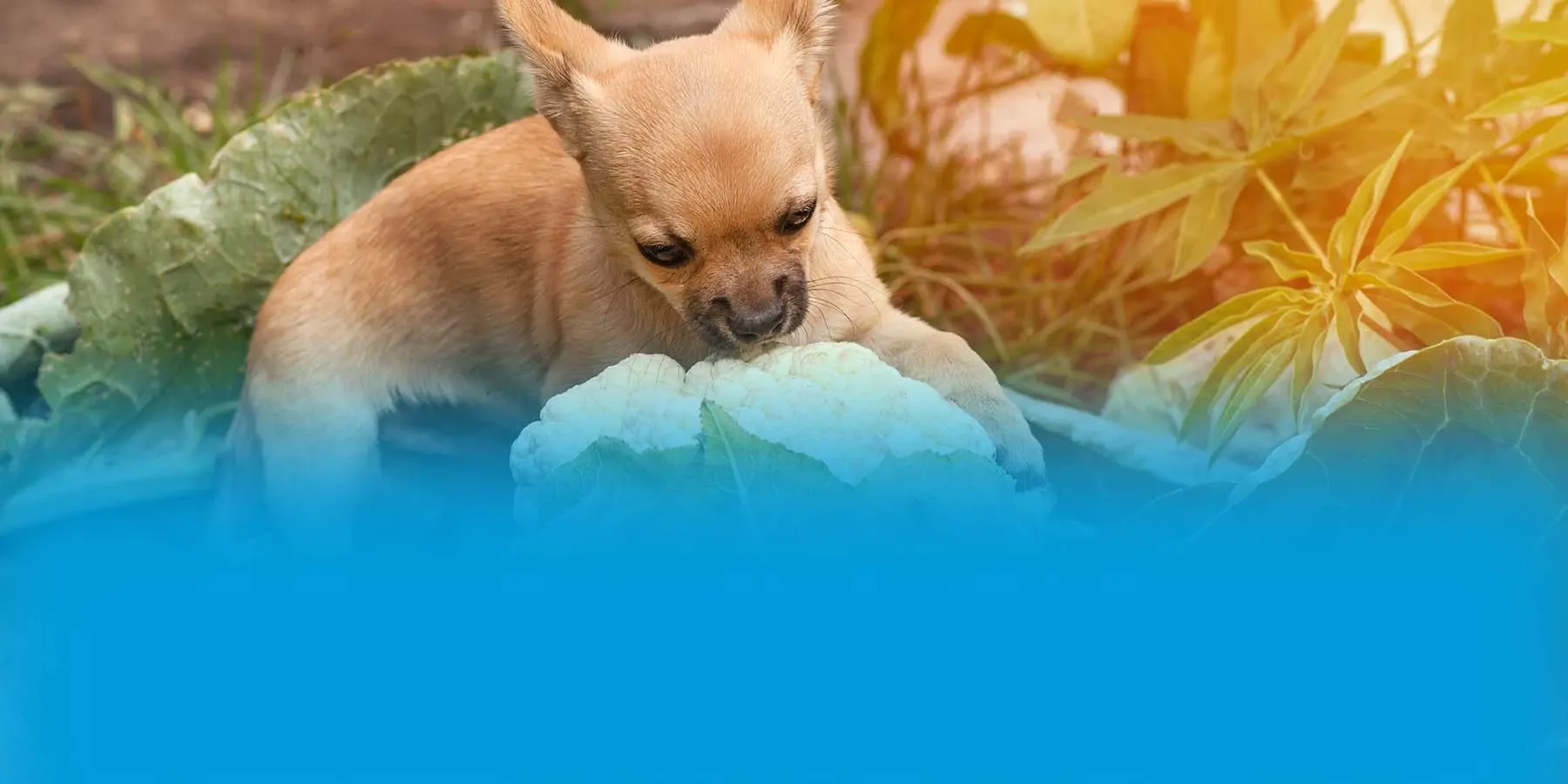PET HEALTH
Humans might disagree on the culinary qualities of cauliflower, but what about your pooch? Can dogs eat cauliflower? Yes! Cauliflower is one of the many vegetables that your dog can eat. But don’t go giving your dog a whole head of cauliflower just yet. There are some considerations to keep in mind.
Is Cauliflower Good for Dogs?
Cauliflower is packed with nutrients, including:1
- Vitamins C and K, which support the immune system and blood
- Calcium, which keeps your dog’s bones strong
- Folate and potassium, which support cell functions and development
- Fiber, which helps manage weight and supports healthy digestion
It’s also low in calories, making it a good weight-conscious snack.2 But there are some caveats to keep in mind.
Any time you introduce a new food to your dog’s diet, it could cause gastrointestinal upset. Cauliflower is even more likely to shake up your pooch’s digestion, since it’s so high in fiber. If you do start giving your dog cauliflower, expect gas. Keep watch for more worrisome side-effects, such as:2
- Diarrhea
- Constipation
- Loss of appetite
- Lethargy
These could indicate severe gastrointestinal distress, or even an allergic reaction. Contact your veterinarian right away if any of these occur. In general, it’s also good to talk to your vet before adding new foods into your pup’s bowl.
Can dogs eat cooked cauliflower?
Cooked cauliflower is just as safe for your dog as raw cauliflower. In fact, it might even be better. Cooking the vegetable breaks down some of the fiber content, which makes it much easier to digest.2
If you do cook cauliflower for your dog, be sure not to add any other spices or ingredients, especially garlic or onions (which are toxic to dogs). You should also avoid oil or butter, as these can give your dog an upset stomach. Steamed or roasted plain cauliflower is the way to go.
How To Feed Your Dog Cauliflower
Cauliflower can be given to your dog in one of two ways: raw or cooked. There are some basic rules you should follow that apply to both:
- Only feed your dog the flesh, or curd, of the cauliflower. The stem is dense and fibrous, and could pose a choking hazard.
- Give your dog cauliflower in small pieces. Start slow, watching them for any negative reactions.
- Consider riced cauliflower. It might not give your dog the satisfying crunch of whole pieces, but they’ll be less likely to choke on it. It could also help them better digest it.
- Freeze small pieces of cauliflower and put them inside a toy to keep your dog occupied.
- Remember: if you cook the cauliflower, don’t add any seasoning, spices, butter, or oil. Keep it simple.
However you choose to give your dog cauliflower, remember: They don’t need it. Cauliflower can be good for your dog, but it shouldn’t be a regular part of their diet. Keep it a special once-in-a-while treat!
Treat Your Dog to Some Cauliflower Power
Cauliflower might be divisive at dinner time, but many dogs are happy to crunch on some. Just be sure to keep the portions small and hold off on the spices. If you're still concerned about cauliflower safety, speak to your vet. Their knowledge of your pup’s medical history can help them decide if it’s a good idea or not.
And if you're looking for ways to make vet visits more cost-effective, consider a dog insurance policy from MetLife Pet. We can help you cover costs for exam fees, diagnostics, and treatments if your pup gets hurt or sick. Check out our coverage and customization options by getting a free quote.

